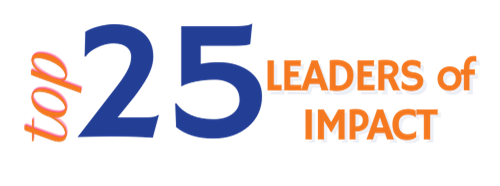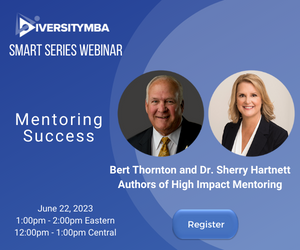The Federal Reserve Bank of Cleveland today announces our renewed commitment to support racial equity and economic inclusion in the communities we serve and within our own organization.
“Unless actions are taken to promote an inclusive economy – one in which people have the chance to move themselves and their families out of poverty, one in which systemic racism does not limit opportunities, and one in which all people can fully participate –our economy will not be able to live up to its full potential and the country will suffer,” said Loretta J. Mester, president and CEO of the Cleveland Fed. “I want to state clearly that our organization is working toward changing the status quo.”
The Federal Reserve Bank of Cleveland has focused on issues of economic inclusion and racial equity for some time, but more intentional and coordinated efforts will help us be more effective in ensuring that the economy offers opportunities to all. Our work to advance a more inclusive economy is now happening on several fronts:
- We have established a Program on Economic Inclusion that provides the public with data, analyses, and insights that seek to advance racial equity and economic inclusion in the communities we serve and across the country. On our Program on Economic Inclusion web page, we have posted and will continue to share timely research and analysis on a range of topics, including the racial wealth gap, jobs and workforce, housing and redlining, minority-owned small businesses, and access to credit. We will provide up-to-date, downloadable, interactive economic data by race. And we will feature conversations with subject matter experts and the public that offer local and national perspectives and insights about racial and economic disparities, their causes and their consequences. Our efforts aim to inform policy and programs that combat racial and economic disparities and identify systemic solutions.
- We are creating an Equity and Inclusion Advisory Council made up of community leaders from throughout the Fourth Federal Reserve District to advise Cleveland Fed senior management on our culture and to identify opportunities for outreach and engagement aimed at further fostering the values of inclusion in our workplace. Nominations for the council will open on December 1, 2020, on our Racial Equity and Economic Inclusion web page.
- We are dedicating a series of our Fed Talk events to racial equity and economic inclusion through the next year. The free public events will explore the latest research looking at the sources of inequality and the most promising policy solutions. Experts from within and outside the Federal Reserve will discuss their findings in virtual forums and, when appropriate, in-person throughout the region. An important goal of the Fed Talk Series is to hear and learn from community members about the most challenging issues they see in achieving economic inclusion.
- We are enhancing our Supplier Diversity Program by setting aggressive goals for increasing spend with minority-owned businesses. In 2021, we are planning to grow our spending with minority- and women-owned business enterprises by up to 5 percent points of total Bank spending. To achieve this goal, we will be increasing the number of networking events we hold to introduce diverse suppliers to key internal stakeholders in an effort to market suppliers’ capabilities.
- We are expanding the reach of our Educational Outreach and Programming geared toward underserved communities of color through both our virtual and onsite programming and by seeking external partners. For many years, our education and outreach programs have supported economic self-empowerment, community engagement, and the public’s increased understanding of the role of the Federal Reserve while also building relationships with nonprofit, civic, education, and business organizations that serve underrepresented communities. In addition, we will be growing enrollment in our annual STEM program, “Girls Make IT Better,” which invites high school girls from Cleveland-area majority-minority high schools to explore Fed careers in STEM fields. For more information, visit our Student Programming page.
- We are building more robust strategic partnerships with Historically Black Colleges and Universities in our region and with other minority-serving, student organizations such as the National Society of Black Engineers, Society of Women Engineers, National Black MBA Association, Prospanica, and others.
- We are creating an internal Diversity, Inclusion, and Opportunity Council that will advise senior management on matters related to our Bank’s culture, including ways to ensure that career opportunities are not affected by biases.
For more information, visit our pages on Racial Equity and Economic Inclusion and our Program on Economic Inclusion.
In case you missed it:
- Cleveland Fed launches new effort to measure eviction filings in 63 US jurisdictions. Weekly eviction data are now being updated and charted regularly on the Cleveland Fed’s website. View the current data.
- Prior to COVID-19, research showed that minority-owned businesses were less prepared to weather an economic downturn. Drawing on insights from various sources, see how they have been faring during the pandemic in our latest report.
Federal Reserve Bank of Cleveland
The Federal Reserve Bank of Cleveland is one of 12 regional Reserve Banks that along with the Board of Governors in Washington DC comprise the Federal Reserve System. Part of the nation’s central bank, the Cleveland Fed participates in the formulation of US monetary policy, supervises banking organizations, provides payment and other services to financial institutions and the US Treasury, and performs many activities that support Federal Reserve operations Systemwide. In addition, the Bank supports the well-being of communities across the Fourth Federal Reserve District through a wide array of research, outreach, and education activities.
The Cleveland Fed, with branches in Cincinnati and Pittsburgh, serves an area that comprises Ohio, western Pennsylvania, eastern Kentucky, and the northern panhandle of West Virginia. For more information, go to www.ClevelandFed.org or follow us on Facebook, Twitter, Instagram or LinkedIn.










